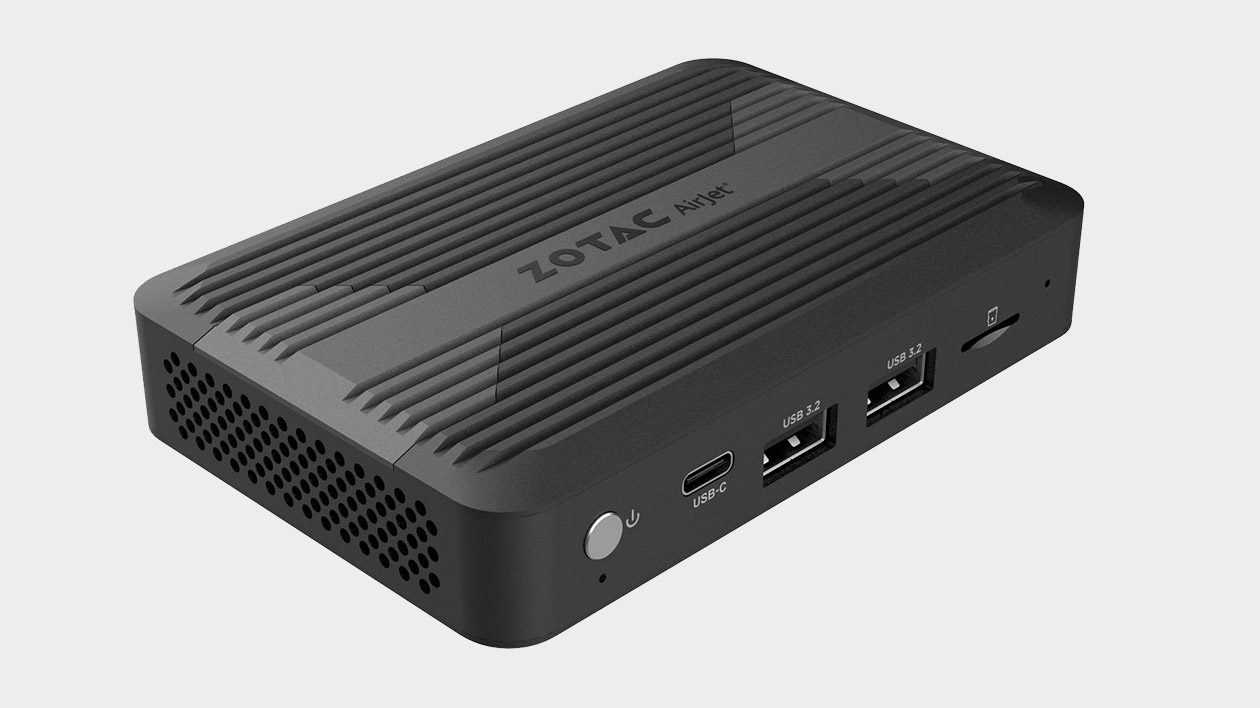Devices with fan-less cooling are nothing new, however passive cooling is generally restricted to low power devices, while those with higher thermal design power (ie: a gaming PC) require much larger heatsinks. But there’s a promising new technology that’s making its way to market combining the best of both worlds. This cooling system generates airflow without the need for fans.
Zotac has just released its ZBOX Pico PI430AJ mini PC. I recall seeing it at Computex in late May. It’s an otherwise mostly unremarkable mini PC, with a Core i3 N300 processor, 8GB of LPDDR5 memory, NVMe SSD support and Zotac’s typically good complement of connectivity options. Oh, and it’s just 0.21L in size, which isn’t much larger than an external SSD. But it’s the cooling system that sets it apart.
It’s the first mini PC to feature solid state active cooling. It incorporates a technology developed by Frore Systems called AirJet. AirJet is a module that sits atop the processor. It features tiny membranes that vibrate at ultrasonic frequencies, which produces pulsating jets of airflow. It’s basically an active cooler, without the fans.
A single AirJet module can dissipate 5W of heat. That’s not a lot, but vendors can scale that up by adding more than one module.
This technology delivers some obvious benefits. Bye-bye fans! They can get very noisy in ultrathin devices, and they are particularly susceptible to failures. Also, the AirJet module is very thin, at just 2.8mm thick, while weighing only nine grams. That makes it ideally suited to thin and light devices.
But CPU cooling isn’t AirJet’s only potential application. Alongside all manner of devices including handhelds, cameras, IoT and networking, it’s well suited to NVMe SSD cooling, which to me is particularly interesting. Frore Systems demonstrated a Phison PCIe 5.0 SSD with AirJet modules at the Flash Memory Summit earlier this year (H/T Techradar). Anything that helps to tame the scary heat and resulting throttling of high performance SSDs—particularly in laptops—is very welcome.
(Image credit: Future)
(Image credit: Future)
Best CPU for gaming: The top chips from Intel and AMD.
Best gaming motherboard: The right boards.
Best graphics card: Your perfect pixel-pusher awaits.
Best SSD for gaming: Get into the game ahead of the rest.
The potential is there to scale the technology. Frore says four AirJet Minis can cool a 20W processor, which is enough for more than a few laptop chips. The dream is to see solid state cooling scale up to chips around the 45-65W range which is what you’ll find in the realm of high performance laptops (burst power modes excepted). Should that happen, we really would be looking at a new era of cooling.
I think it’ll be a while before we can ditch the fans in our gaming PCs though. A 300W+ i9 14900K stresses even a 360mm AIO cooler at full tilt, so we’ll have to wait a long time before solid state cooling is capable of that kind of performance.
Still, I’m very excited to see where solid state cooling goes from here.











